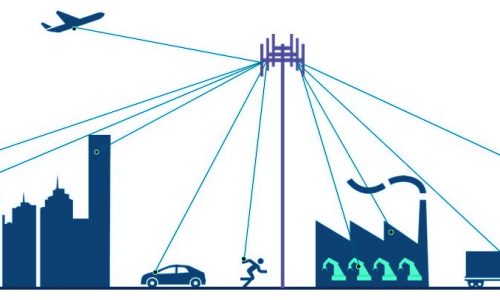Onboarding your team properly is important. Very important.
Obviously.
Rarely do project managers do this well. During project kick off, you probably don’t have a fully mobilised team. The client wants progress, chasing you for documents, schedules and submittals. You barely have your office set up and you are firefighting from day-one.
As the project manager, it is up to you to set an environment in which your team can succeed. Onboarding your team properly and professionally is a foundational step for this. Not only is it important for those who report directly to you, but also for everyone under your jurisdiction. I mean everyone.
And you shouldn’t palm this off to HR either. HR doesn’t know your processes and your expectations. You are the project manager. People work for you, and it is up to you to set the rules. Your team needs to have confidence in you to lead a successful project.
I’m not suggesting you do this all by yourself. Afterall, you do have a team. If you have a large team, say 300 people working on your project, it’s unrealistic to onboard everyone personally. However, it’s your responsibility to ensure that everyone is properly onboarded to the project. By setting clear expectations and leading by example, you’ll create an environment where your team understands their roles and contributions.
Onboarding Objectives
The objectives of onboarding is to ensure clarity on five essential aspects of project management:
- What you are delivering…
- Who’s doing what, and who’s in charge?
- Communication strategy
- Team integration
- Non-negotiables
What you are Delivering…
The objective of the project should be obvious. If you are building the house, the objective is to build a house. However, you are the project manager, and you know it’s a bit more complicated than that!
You have read the contract, the scope of work, the deliverables… You produced (or inherited) the project plan, the Work Breakdown Structure (WBS)… You have assessed the risks, and you know what the pits falls are… right…?? At the end of the day, you are not just delivering a house, you have to deliver a bunch of interim deliverables along the way. Many of the deliverables are technical in nature, but many are administrative. These peripheral deliverables should be baked into your project plan and schedules, and it is your duty to make sure everyone on your team understands this.
Equally important, is having clarity around what you are NOT delivering. This is particularly challenging to manage if you are a subcontractor for a larger project with other subcontractors doing their bit. More critically, it can be very difficult to have clarity, or even consensus, over your obligations for many of these peripheral deliverables. For example, if you are pulling fiber cables, but someone else is installing the containment, is it your responsibility to produce drawings for the cable routes, or is it the responsibility of the company installing the cable containments? Experience will help… a lot. And it can turn into a bit of a political game. There is not necessarily a right or wrong answer, unless it is clearly stated in the contract or the scope of work. And there are repercussions and consequences with both approaches. The key is that regardless of the decision you make, your team needs to understand and is onboard with it, and you live with and manage the consequences.
Who’s doing what, and who’s in charge?
Having clear roles and responsibilities for your team should also be obvious. However, unless you make this clear from the start, people will likely make assumptions about their jobs and their responsibilities.
For starter, every task in your project plan MUST have an accountable owner. You should be able to point to a task on your project plan and know who is accountable for it.
For clarity, being accountable and being responsible are two different things. Being accountable means that you have ultimate ownership of the task. If it’s not done or done right, then your neck is on the line. On the other hand, being responsible means that you are the one doing the work. They might be the same person, but not necessarily. So from a project manager’s perspective, you should hold to account the person who is accountable to the task, and not the people who are doing the task (unless there are broader performance issues, at which point you will need to get involved.) And by establishing clear accountability and responsibility, you also establish a clear reporting structure. Remember, it is not a democracy on a construction site.
Don’t forget the peripherals and the admin duties. Who writes the documents? Who puts the templates together? Who orders the office supplies? Who takes the meeting minutes? Who refill the ink cartridges for the printers?
During the project, if you hear people arguing “this is not my job…” then it usually means that you haven’t communicate the roles and responsibilities clearly enough. This can happen even with best intentions, but you should step in to fix it.
Communication Strategy
In order for you to make decisions, you need to have good information. Even moderate size projects have lot of information, and a lot of noise and erroneous data.
Data and information need to be consistent (taxonomy and terminology), representative (accurate and faithfully reflect reality), exhaustive (covers all aspect of the project, including issues and risks), manageable (does not over-burden you and your team), and accessible (searchable, retrievable, and decipherable). Your communication strategy and protocol need to support this.
You have access to large array of information and sources. It’s worthwhile breaking it down.
- Formal Communication
- Reports that your team submits to you
- Meetings (face-to-face and online)
- Minutes and action check lists
- Quantitative Data
- Your teams’ trackers and registers
- Your trackers and registers
- The master project plan
- Official
- Technical and administrative submittals
- Letters and Notices (from you, your team and your client)
- General
- Emails
- Instant Messaging
- Site walks and inspections
- Speaking to people
Formal Communication
Formal communications, such as reports and meetings, provides direct information and status about a project. However, if not managed properly, they can overburden yourself and your team. If reports are not read or don’t have actionable outcome, then you should question the necessity.
I am personally in favor of meetings over written reports. Meetings encourage dialogue and allows you to interrogate information immediately. However, meetings must be targeted, with actions and outcomes. But the good news is that you can manage meetings. If a meeting that you lead is not productive, then it’s your fault and you CAN fix it. Whereas, if people write bad reports, it is difficult to fix.
The misconception is that meetings take time out of people schedules. I would argue that meetings are more efficient than written reports. I get more out of a 30-minute meeting, assuming that it is managed reasonably well, than having my team spend 30 minutes writing reports, which I then have to read, digest, and follow up separately.
But it is worth remembering that having productive meetings can be difficult, but the key point is that you have control of them. <read more…>
Quantitative Data
Quantitative data helps project managers keep tabs on how things are going. This includes trackers, registers and Kanban boards that monitor and track progress and performance.
Too many data touch points
A common issue is the presence of too many registers and trackers. This fragmentation makes it difficult for you, as the project manager, to access the right data and information. Furthermore, having too many data touch points will likely over burden you and your team with endless entry and validations.
To mitigate these issues, you should seek to consolidate and reduce the number of data touch points as much as possible to help ensure information and data are manageable. Teams, especially engineers, often have their own workflow using many different spreadsheets and registers, and you may not want to disrupt their processes unnecessarily. However, you should ensure that their data integrates frictionlessly with your own system, whether you are using the humble Excel, SmarSheet, PowerBI, Tableau, Oracle, SAP or a bespoke system, it is important that you set clear data parameters from the outset and instruct your team to adapt their workflow to export data into your required data format. Automation will make things easier. In essence, you want to minimize your interaction with raw data while still obtaining usable information.
Data veracity
Duplicate data, repetition and excessive manual data entry can lead to errors. The more data touch points there are, the more likely errors will seep in.
As previously discussed, defining clear data reporting parameters for your team from the outset is essential. Equally important is establishing a single accountable owner for each data set. Assigning responsibility for data reporting helps maintain accountability and ensures there’s a go-to person for any questions or clarifications. For instance, if task completion updates are the responsibility of the team lead, they become the authoritative source for that data. This not only simplifies the reporting process but also fosters a culture of ownership and accuracy within the team.
Errors will invariably happen, and the key point here is that when they do occur, you are able to easily and quickly identify and rectify them.
Sloppy reporting can be a significant pitfall in project management. For example, it is common that team members report tasks as complete when they are “nearly” done (and I use the term “nearly” loosely here). It’s crucial to cultivate a culture of honesty and transparency in your team’s reporting practices.
Official Documents and Communication
In construction, a centralized Document Management System (DMS) is typically stipulated by the client to manage and administer official documents and communication with subcontractors. These documents include technical and administrative submittals, formal letters, notices, and instructions, serving as official records and approvals for key decisions and issues.
Given their significance, it’s crucial that your team understands their importance. However, the sheer volume of information, much of which may be redundant or irrelevant, can be overwhelming. Notices and instructions may be issued to multiple contractors, regardless of relevance. While it may be best practice for the core team to review all official communications, this isn’t always practical. The risk is that if everyone is responsible for reading everything, no one ends up reading and following-up on anything.
This is where a gatekeeper comes in. Their role is to log every piece of official communication into a register for the team to review. Owners can then be assigned to each item, ensuring follow-up on key actions and decisions so nothing slips through the cracks. The gatekeeper could be you, your deputy or a personal assistant, but it’s important to remember this is not a clerical task. The gatekeeper needs to be fully onboarded into the project and processes to understand the bigger picture.
Team Integration
Onboarding isn’t just about clarifying roles and setting expectations; it’s also about ensuring your team is settled and connected so that they can focus on doing what they are paid to do.
This is especially crucial when your team is working abroad. It’s important to support your team both socially and professionally. This might include providing practical information and assistance with accommodation, local culture, points of interest, social events, transportation, as well as information on local laws, regulations, and immigration or visa requirements. Organizing casual social events regularly on can also help team members get to know each other in a relaxed setting. These seemingly small actions can foster a sense of belonging, making it easier for team members to collaborate effectively.
Non-Negotiables
With the key points covered, this is the ideal time to communicate and enforce your way of working—not just the tasks at hand, but how you expect the team to operate and collaborate. This is where your leadership acumen comes in.
Make your non-negotiables clear from the start. Whether it’s flagging delays or risks as soon as they are identified (no surprises), addressing issues head-on rather than deferring them, stepping outside formal roles when the project demands agility, or maintaining a strict reporting structure—these principles will shape how you lead. Different project manager will have different approaches. The key point is that you need to be clear about how you need your team to operate.
What’s Next?
Once your onboarding framework is established, the next step is to implement it through structured onboarding sessions.
Formal Onboarding Sessions
Keep these sessions concise—ideally no longer than 20 minutes.
While it’s important to encourage feedback, you want to avoid letting the onboarding session devolve into a lengthy Q&A or brainstorming session. You can set a strict time limit of 30 minutes for the meeting to include a 10-minute Q&A. This keeps discussions focused and efficient. Additionally, reinforce your open-door policy, inviting team members to share their thoughts and questions outside the session. This way, you foster a culture of communication without derailing the onboarding process.
Follow-through
Remember, onboarding isn’t a one-time task; it’s an ongoing commitment. To maintain alignment and engagement, schedule mid-boarding sessions every six months. These sessions give you a chance to reassess roles, expectations, and any emerging challenges. Use this time to reinforce your standards and ensure everyone remains on the same page, connected to the project’s goals.
By investing in these steps, you cultivate a culture of collaboration and support. Effective onboarding and mid-boarding will strengthen your team’s cohesion and performance, ensuring everyone works together more smoothly and efficiently.












